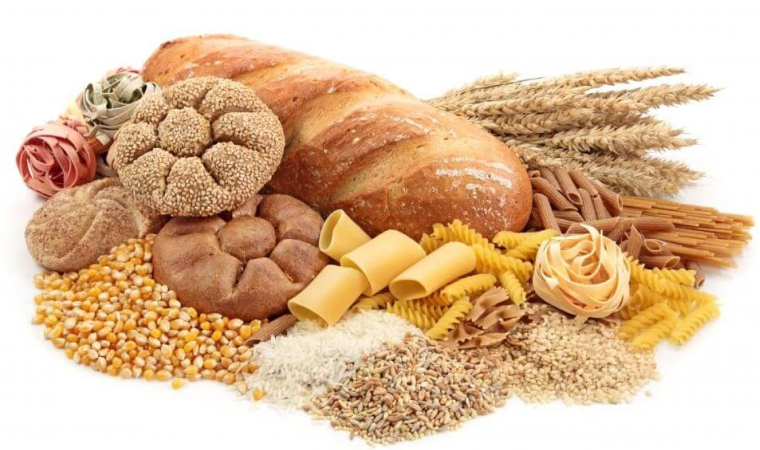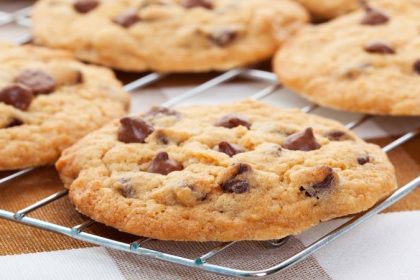Will carb cycling make me slim? What is this diet and how does it cause weight loss? Carbo-cycling has become a hot and highly debated topic over the past few years.
This diet is a new nutritional method in which carbohydrates are consumed with a specific and intermittent schedule. It means that some days you reduce the consumption of carbohydrates, some days you increase it and sometimes you eliminate carbohydrates altogether.
But what about other macronutrients? They are programmed based on your carb intake. Read all about the hyped carb cycling diet in this article from Vitamin.
What is a carb cycling diet?
Carb cycling is a diet in which your daily, weekly or monthly carbohydrate intake alternates.
The carb cycling diet is a very strict diet that was primarily used by professional athletes and bodybuilders who want to lose body fat. But this diet is also popular among ordinary people who want to lose weight.
In this diet, you are constantly alternating between high-carb days and low-carb days. There may even be “no carb” days. The goal is to lose weight and burn fat faster; Or if you have a weighted step, this condition will be broken. High carb dieting or carbo cycling claims that it can cause fat burning and muscle building at the same time.

The role of carbohydrates in the carb cyclinc diet
The main focus and emphasis in a high-carb diet is on the amount of carbohydrates you consume, because this macronutrient is the most important factor in your body composition and body shape, as well as your body’s performance.
What happens on high carb days?
On the high-carbohydrate days of the carb cycling diet, insulin sensitivity in the body increases and your body responds better to incoming carbohydrates. Fat burning also occurs by tricking the body into using fat as fuel.
What happens on low carb days?
- you feel refreshed and more energetic;
- Glycogen stores (muscle fuel source) are restored and replenished;
- A carb cycling diet stimulates muscle growth by creating an anabolic environment.
What factors are effective in determining high and low carb days?
Carb cycling or green carb diet includes high carb and low carb days. Remember that consuming protein in this diet is essential and a part of your daily diet should be dedicated to protein. The amount of your fat consumption is adjusted according to your carbohydrate intake.
But planning curb cycling is based on what criteria and factors? You can plan your carbohydrate intake based on the following factors:
- Your goal: Losing weight, burning fat, breaking the weight step, building muscle, etc. According to the goal you have, the amount of carbohydrates and the day of consumption are determined.
- Training days and rest days: One of the factors determining a high carb or low carb day is whether or not you are training on that day. High carb intake on training days and low carb intake on rest days.
- Type of exercise: Carbohydrate intake can be adjusted depending on the intensity and duration of exercise. The longer or more intense the workout, the more carbohydrates should be consumed. The days when your activity is high, must be the day of high and complex carbohydrate intake.
How to do a carb cycling diet?
If you think carb cycling is right for you, you can use the following guide to start your regimen. Of course, it is better to consult your trainer or nutritionist in this regard.
The first step is to count your macros (the macronutrients you consume in a day). Next, you need to figure out how many grams of carbs you are consuming per day. Write down all this information in a notebook.
Then you can start your diet. You make a food plan for yourself in which protein consumption is high every day, carb consumption will be low and then high, and fat consumption will be low and high, inversely with the amount of carbs.
Consider the days when your carbohydrate intake was already low as a low carbohydrate day and increase your carbohydrate intake to 50 grams per day. Be sure to dedicate this day to rest and avoid physical activity. The day after low carb is high carb and you are allowed to eat up to 200 grams of carbs. In other words, your week with the carb cycling diet will look like this:
- First day: 50 grams of carbohydrates – rest day
- Second day: 200 grams of carbohydrates – strength training day
- Third day: 50 grams of carbohydrates – rest day
- Day 4: 200 grams of carbohydrates – strength training day
- Day 5: 100 grams of carbohydrates – day of low-intensity aerobic training
Similarly, this cycle is repeated every 5 days. Note that there are many types of carb cycling diets and we have only introduced one example.


What are the benefits of a carbo cycling diet?
Research and studies have shown that low-carb diets (like carb cycling) help with weight loss and increase metabolism. The benefits of a low-carb diet include improving insulin sensitivity, increasing fat burning, improving cholesterol levels, and improving metabolic health.
But your body still needs carbohydrates as a macronutrient, so a diet that completely eliminates carbohydrates is not appropriate. Fortunately, in the carb cycling diet, you will still benefit from the benefits of carbohydrates; Because carbohydrates are not removed and are consumed enough in the day itself.
Another important benefit of carb cycling is increasing sports performance in athletes. The athlete consumes enough carbohydrates on his high-carb day so that his body has enough energy for training and competitions. This will help improve his endurance, strength and overall athletic performance. Also, carb cycling is a good way to lose weight and build muscle. We will explain these two things further.
Does carb cycling help you lose weight?
Yes; The carb cycling diet will help you lose weight if you follow the calorie deficit rule. But there is currently no proven scientific research that shows that carb cycling is more effective than other diets for weight loss and is superior to other diets.
You will lose weight in any diet if you follow the rule of calorie deficit. A calorie deficit means that your daily calorie intake is less than the calories you consume.
Also, because carb cycling is a more reasonable and balanced diet and doesn’t excessively restrict carbohydrate intake (an important macronutrient), it’s easier to stick to.
Benefits of carb cycling for muscle growth and athletic performance
Carb cycling can also be an effective nutritional strategy for building muscle. Training days are supposed to be high carb days and rest days are supposed to be your low carb days. In this case, on the day you train, you have taken enough carbohydrates to have the energy for training and you will not have the problem of weakness and loss of energy.
On low-carb days, your rest day, your body is forced to use stored fat for energy. Also, due to lack of carbohydrates, insulin sensitivity improves. This smart carb up-and-down cycle is helpful in preventing excessive fat storage.
Another major benefit of carb cycling for muscle building is that it’s easier than strict carb-elimination diets. Diets to eliminate carbs or very low carbs (such as ketogenic) are very difficult and apart from energy loss, they put pressure on the athlete mentally.
Sample carb cycling diet
Designing a personal carb cycling diet is not difficult and does not require a calorie counter or calculator. Vitamin then introduces a carb cycling diet sample, so that you can get to know the arrangement of foods and the model of this nutritional program.
Day 1: High carbohydrate day
- Breakfast: Oatmeal with banana and almond powder on top
- Snack: Greek yogurt with dried berries
- Lunch: Grilled chicken breast with quinoa and grilled vegetables
- Snack: Apple with peanut butter
- Dinner: Baked salmon with potatoes and steamed broccoli
Day 2: low carb day
- Breakfast: boiled eggs with spinach and feta cheese
- Snack: celery with hummus
- Lunch: Grilled turkey with avocado and cucumber and lettuce
- Snack: cottage cheese with cherry tomatoes
- Dinner: fried shrimp with zucchini and bell pepper
Day 3: Medium carbohydrate day
- Breakfast: protein smoothie with spinach, banana, protein powder and almond milk
- Snack: A handful of mixed nuts
- Lunch: Steak (grilled meat) with mixed vegetables, tomato and balsamic sauce
- Snack: Mango
- Dinner: Baked chicken with quinoa and lettuce
Day 4: High carbohydrate day
- Repetition of the first day’s menu
Day 5: Low carb day
- Repeat the second day’s menu
Sixth day: moderate carbohydrates
- Repeat the menu of the third day
Seventh day: high carbohydrate day
- Repetition of the first day’s menu
Who should not follow the carb cycling diet?
Curb cycling for people with diabetes and hypoglycemia (Low blood sugar that requires a constant source of glucose in the blood) and other metabolic disorders is not suitable at all. Pregnant and lactating women, people who are underweight, teenagers and other vulnerable people should not try such hard diets.
If you have obsessive eating and eating disorders, do not come to carb cycling. This diet may make your obsession worse because you have to constantly count carbs, and this itself is an anxiety-inducing factor that makes your obsession worse.


Disadvantages and side effects of carb cycle
A carb cycling diet is not easy and cannot be followed for a long time. This diet plan is not suitable for people who do not exercise. Because on days of high carbohydrate consumption, you must exercise (bodybuilding) and exercise your muscles. On low-carb days, you may experience these side effects:
- sleep problems
- Reduced concentration
- Mood changes
- tiredness
- constipation
- flatulence
Of course, these symptoms usually do not last long and drinking water and electrolytes can help.
final word
Carbo cycling is a type of diet in which a person’s daily, weekly or monthly carbohydrate intake alternates, and is suitable for those who want to lose body fat or lose weight. In this article, we introduced the carb cycling diet in full and told about its advantages and disadvantages and also provided a sample diet.
Resources: eatingwell – medicalnewstoday – shape – healthline
RCO NEWS
RCO
















